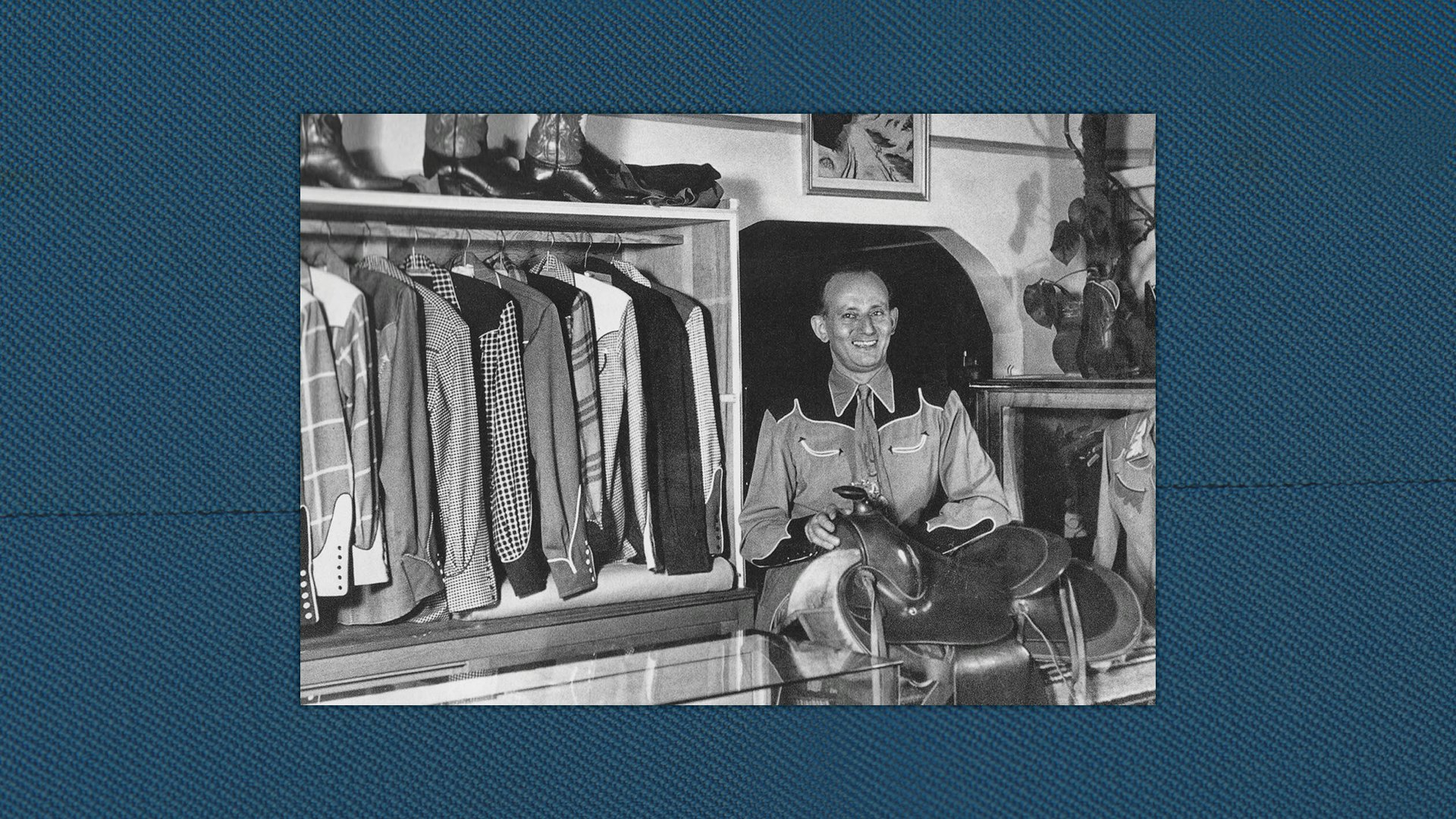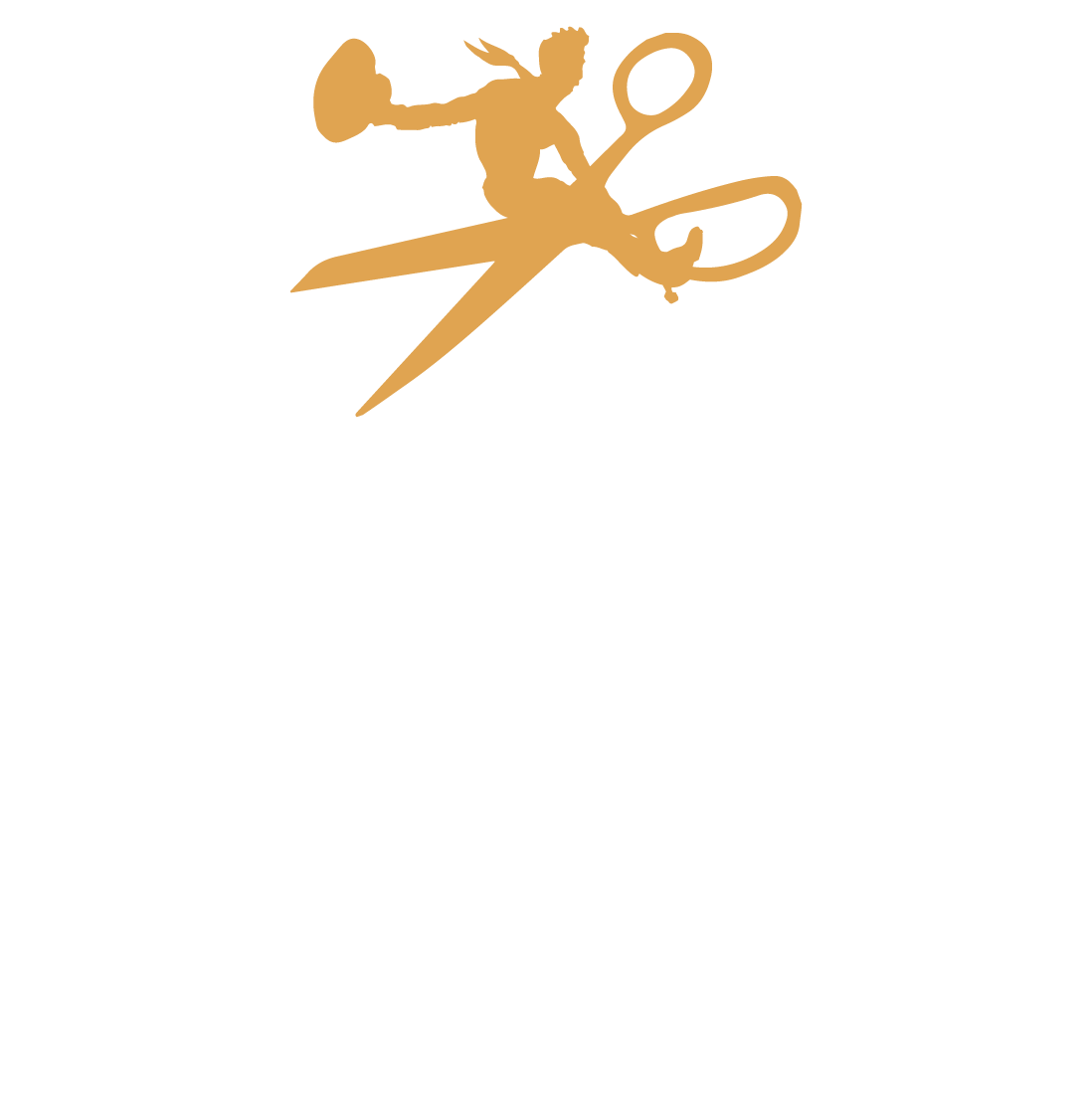

Nathan Turk at his shop in Van Nuys, California. Courtesy of Pearl Shulman, Jean Simon, Holly George-Warren, and Michelle Freedman, How the West Was Worn
Part Three
Nathan Turk:
Old World Meets New West
Pioneering Western-wear designer Nathan Turk was born to Yoyna and Pearl Teig in a village near Minsk, Russia (now Belarus), in 1895. When he was ten, his father apprenticed him to a tailor in Warsaw, Poland: Pioneering Western-wear designer Nathan Turk was born to Yoyna and Pearl Teig in a village near Minsk, Russia (now Belarus), in 1895. When he was ten, his father apprenticed him to a tailor in Warsaw, Poland, where he learned to sew.
Like his trailblazing East Coast counterpart, Rodeo Ben, Turk immigrated to America in his teens. In the early 1920s, he moved to Los Angeles and opened a dry cleaning and alterations business on Ventura Boulevard, between a movie studio and the ranches and homes where Hollywood’s early Western stars lived and worked. Turk was fascinated by “cowboy and Indian” movies and designed clothes for celluloid cowboys who dropped by his shop. Screen idols Gene Autry and Roy Rogers became two of his biggest clients.
Turk’s family-run business—augmented by the expert, Old World finishing techniques of his wife, Bessie—blossomed in the 1940s, as the popularity of rodeo parades and dude ranches spurred demand for showy Western attire. Other customers at Turk’s English and Western Apparel Shop included western swing and hillbilly-boogie musicians Spade Cooley, Hank Thompson, and the Maddox Brothers & Rose. By the 1960s, the polite and soft-spoken tailor’s regular clients included Ernest Tubb and Buck Owens, who clad themselves and their bands in exquisitely tailored suits that reflected Turk’s eye for color and love of fine fabrics.


The Maddox Brothers & Rose. From left: Cal, Henry, Rose, Don, and Fred Maddox, c. 1950
America’s Most Colorful Hillbilly Band
In the late 1930s, they arose like dust devils from California’s San Joaquin Valley—where they once labored as migrant workers—to become one of the most popular musical attractions on the West Coast. The Maddox Brothers & Rose built their reputation as the most colorful hillbilly band in America on a raucous stage act that blended slap-bass hillbilly boogie, honky-tonk, western swing, old-time music, comedy, and magic tricks, while decked out in matching technicolor costumes designed by Nathan Turk. Spunky lead singer Rose Maddox and her brothers inspired Turk to craft elaborately embroidered stage wear that was as captivating as their music and antics. “We thought of the Maddox Brothers & Rose as the best-dressed people in country & western,” said Rose Lee Maphis, another West Coast performer. “There were five of them up there, all dressed alike. It was very effective.”
The Maddox Brothers & Rose, silent footage
Rose Maddox
Nathan Turk designed this three-piece cowgirl costume for Rose Maddox. Her satin shirt with red enamel snaps and embroidered flowers and vines is offset by a matching bolero vest and split skirt, embellished with contrasting suede fringe, piping, and chain-stitched roses.
These Maddox Brothers & Rose costumes are representative pieces from five matching sets.




Cal Maddox
Short, Eisenhower-style jackets and bell-bottom pants like those worn by sailors were the preference of the Maddox brothers. Turk designed this wool gabardine suit and satin shirt, decorated with chain-stitched hearts, flowers and other Slavic motifs, for guitarist Cal Maddox.




Fred Maddox
Bass player Fred Maddox performed in this Turk ensemble, decorated with embroidered grapes and contrasting piping. Similarities between the Maddox family and the Joad family of John Steinbeck’s novel The Grapes of Wrath were undeniable. In 1933, the Maddox children accompanied their parents from their hometown of Boaz, Alabama, to California, by hitchhiking and jumping box cars on freight trains. Once there, they led the life of “fruit tramps,” picking fruit up and down the state, before the Maddox siblings formed a band in 1937 and began performing on radio.




Don Maddox
Fiddle player Don Maddox wore this wool gabardine and satin Turk design, embellished with piping, smile pockets with arrowhead stitching, and chain-stitched designs based on Slavic folk-art motifs. “We had the shirts made to look like the pants,” explained Rose Maddox, “so that we still had a complete outfit if we wanted to take the jackets off, like in the summer when it was too hot to wear the jackets.”




Henry Maddox
Turk designed this stage costume—embellished with contrasting piping and embroidered flowers—for mandolin player Henry Maddox, dubbed “Friendly Henry, the working girl’s friend,” by the band.



The Designs of Nathan Turk
See Turk’s Designs on Stage
Les “Carrot Top” Anderson, “No Help Wanted,” 1957
Buck Owens & the Buckaroos, “My Heart Skips a Beat,” 1964
















